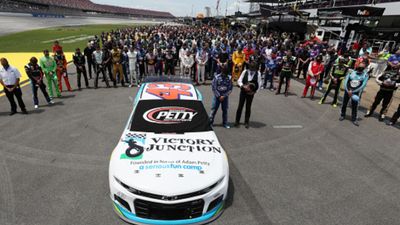Until 2015, NASCAR regularly disclosed purse details in their race summaries, offering transparency about potential earnings for teams and drivers. In the past, drivers would negotiate contracts with team owners that typically included a base salary alongside a share of the race purse, which varied from week to week depending on race results. This system allowed for a degree of unpredictability in earnings, with performance being a significant factor.
The Shift to the Charter System
However, a significant change occurred in 2016 with the introduction of the Charter System. Under this new structure, NASCAR created 36 team ownership charters, each assigned a value based on the team’s historical performance and recent achievements. This move provided more stability to the financial structure of the sport and allowed for better planning and compensation for teams.
Dave Alpern, team president of Joe Gibbs Racing, discussed the new compensation model for chartered teams, explaining that it now combines both fixed and variable revenue streams. The payout system for chartered teams is made up of four primary sources:
1. Fixed Revenue: A consistent amount paid to every chartered team.
2. Race Purse: A variable payment based on a team's finishing position in each race.
3. Year-End Points Fund: A payout based on a team's points standings at the end of the season.
4. Historical Payments: These are based on a team's past performance, primarily calculated from a three-year weighted average.
This revised model aims to provide teams with a more stable financial foundation while still rewarding consistent high performance.
Distribution of Race Purse Money
Once the race purse is established, it is pooled and distributed based on the finishing positions of the drivers, from first place down to the last. Each team receives a portion of the purse according to the driver’s finish. The distribution within the team is then split further: a portion goes to the team itself, a part is allocated to the driver, and another portion is shared among all team members. This structure is designed to emphasize teamwork, ensuring that when one individual succeeds, it’s a victory for the entire team.
NASCAR's $7.7 Billion TV Deal
In addition to race purses, NASCAR has secured a landmark TV deal worth $7.7 billion over seven years. This deal, set to start in 2025, will see four major broadcasters — Fox, NBC, Warner Bros. Discovery, and Amazon — air 38 races annually. The question arises: how does the $1.1 billion in annual TV revenue get distributed?
According to Alpern, NASCAR's media partners pay a fee, which is then divided into three main buckets:
1. Tracks The largest portion goes to the racetracks.
2. Teams: The second largest portion is allocated to the teams.
3. NASCAR (the League): A smaller portion goes to NASCAR itself.
Within the teams' bucket, the revenue is further divided and shared with the drivers. Payouts are determined by both weekly performances and year-end standings, meaning that the better a team performs, the larger their share of the media revenue.
With this new TV deal, the race purse is set to increase, creating more opportunities for teams and drivers to earn higher rewards for their performance on the track.
NASCAR's transformation
The introduction of the Charter System and the new TV revenue structure has significantly transformed how NASCAR distributes purse money and media revenue. Teams now enjoy a more stable financial environment, with earnings based on a combination of historical performance, race results, and media deals. While the purse for each race remains performance-based, the increase in media revenue is set to further enhance the financial rewards for NASCAR teams, making the sport more lucrative and competitive than ever.
ADVERTISEMENT










